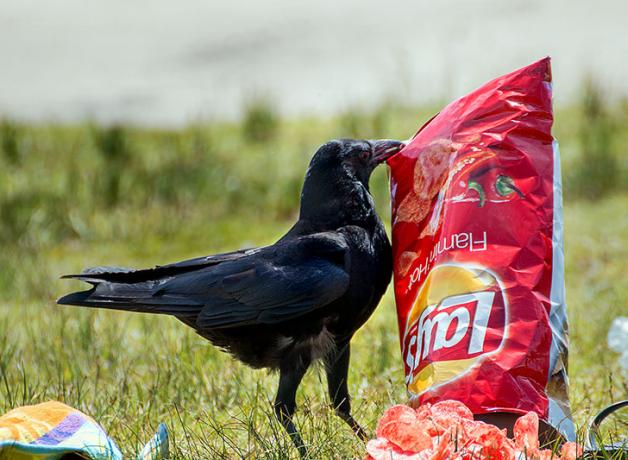69: American Crow
I write to you from Arapahoe, Ute, and Cheyenne land. I am interested in learning about the different animals that live in the place where I was born. Before we start with today’s animal, I want to emphasize that biological classification as understood by western society has its roots in racism, sexism, and transphobia – here’s a good explainer about why.
Unlike other birds, crows love to gather in my neighborhood. I live in a pretty urban part of Denver and there are a lot of outdoor cats who I assume have scared away most of the smaller birds, but crows DNGAF. Every few weeks I’ll catch them in a massive group hanging out in a neighbor’s yard, or on the electrical wires, cawing up a storm, sharing gossip I have to assume.
The American Crow (Corvus brachyrhynchos) is a large passerine, or perching bird, found throughout most of North America. They can be 16-20 inches (40-50 cm) long, but almost half of that is their tail! Their feathers appear black but are actually iridescent. Lots of articles are devoted to figuring out how to tell crows and ravens apart; if you’re in eastern Colorado, you’re probably seeing a crow, but just in case, ravens have bigger beaks and are larger than crows.
Crows, of course, are very intelligent. Scientists estimate that there are around 31 million crows in North America today, remarkable considering how targeted they have been by many humans over the past 150 years because of their penchant for destroying crops. There’s records of Oklahomans dynamiting mass quantities of crow nests in the early part of the twentieth century and, after many years of doing this, finding that there were actually MORE crows than when they’d started.
(Here’s where I’d put that gif of Lucille Bluth saying “Good for her”)
“Examples of tool use in American Crows include a captive individual dipping a cup in some water to moisten a container of dry food and a wild crow ripping off a splinter of wood from a fence to try to spear some prey in a hole.” Crow intelligence may relate to how social they are, with yearlings and even two year olds staying with their parents to help feed and raise the newest chicks. They hold “funerals” for each other, calling out when they find the body of another crow and gathering other crows nearby. And then there’s the infamous caveman mask experiment at the University of Washington, where crows banded by someone in a caveman mask remembered their bander and scolded him angrily over a period of months. Part of their intelligence is their language ability, which you can read more about here.
If you’d like to read more about how smart birds are, I highly recommend Jennifer Ackerman’s book The Genius of Birds.
